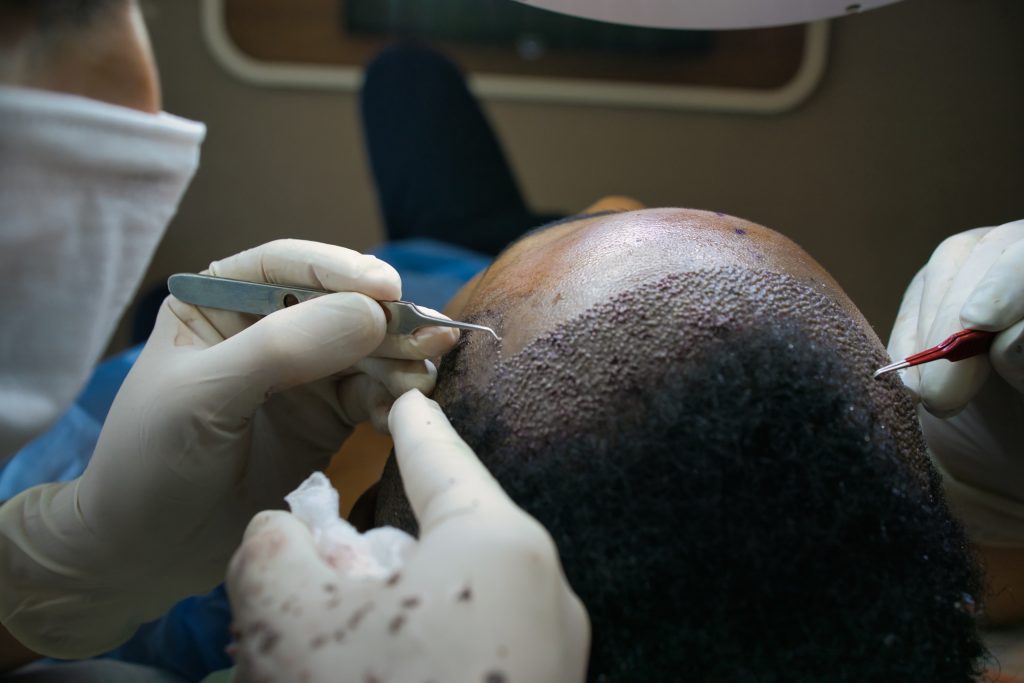Over the past few years, hair transplants have become very popular in Turkey, making it a centre for people who want to stop losing their hair. As the need for hair repair treatments grows, it is important to talk about the different hair transplant techniques that are out there. Because each of these ways has its own benefits and can be tailored to a person’s needs, it is important for people to know their choices and make well-informed decisions about their hair transplant process.
When talking about hair transplants, it’s important to talk about the different methods that are used in the field. All of this information helps people fully grasp the steps needed and lets them pick the approach that works best for them. From the more basic follicular unit extraction (FUE) method to the more advanced strip cutting method, each has its own pros and cons.
As hair transplants become more popular, it is important to teach people who are thinking about getting one about all of their choices. By learning about the different ways, people can make smart choices and start the hair regrowth process that fits their needs and goals.
Types of Hair Transplant Procedures
Losing hair is a problem that a lot of people all over the world have. Thanks to progress in medical technology, different hair replacement techniques have been created that can help people get their full head of hair back. Today, there are many different types of hair transplant treatments, ranging from older ways to more modern ones.
Follicular Unit Extraction (FUE)
Individual hair follicles are taken straight from the source area and transferred to the receiver area that is falling or losing hair. This is called Follicular Unit Extraction (FUE). The usual way to transfer hair is called Follicular Unit Transplantation (FUT), and it involves removing a strip of skin and cutting it up into separate pieces that are then transplanted.
One of the best things about FUE is that it doesn’t leave a scar. When FUE is done, very small cuts are made, leaving scars that are almost impossible to see. Because of this, FUE is better for people who like to keep their hair very short. Because there are no stitches or sutures to take out after FUE, the healing time is shorter than after FUT.
Not all things are good about FUE, though. The process takes longer than FUT because each cell has to be carefully taken out one at a time. This makes the process take longer and require more work from the surgeon. FUE may also have a higher rate of follicle transection, which means that the hair follicles are hurt more often during extraction. This makes it less likely that the graft will survive.
FUE usually costs more than standard ways when you compare the prices. This is because each cell has to be extracted individually, which takes skill and time. It also needs special tools. For people who are losing a lot of hair in one place, FUT may be a better choice because it costs less.
Follicular Unit Transplantation (FUT)
Follicular Unit Transplantation, or FUT, is a medical way to restore hair loss. Hair follicles are taken from the donor area and moved to parts of the head where hair is missing or getting thinner. Men with male pattern baldness often get this surgery done, but women can also get their hair back.
The first step in the FUT process is to physically remove a strip of hair-bearing skin from the back or sides of the head. This is called the donor area. After this, the strip is split into follicular units, each of which has one to four hairs. Under a microscope, these follicular pieces are carefully cut up and made ready for transplanting.
Tiny cuts or holes are carefully made in the area where the hair will be transferred to make it ready. The collected follicular units are then carefully put into these cuts, making sure they are lined up correctly and facing the right way for a natural look. Patients can usually expect a fairly quick healing time after the treatment, which is usually done with local anaesthesia.
The way that hair follicles are taken out is a big difference between FUT and Follicular Unit Extraction (FUE), which is another popular hair transplant method. In FUT, a piece of skin is cut away. In FUE, a punch tool is used to remove each follicle one at a time. It is usually possible to transfer more grafts during a single FUT session, which makes it better for people who have lost a lot of hair.
Cost-wise, FUT is usually less expensive than FUE. This is mostly because of the difference in method and the fact that graft extraction takes less time with FUT. It is important to keep in mind, though, that the price of hair transplanting can change a lot based on things like how much hair loss there is, how many grafts are needed, and where the centre is located and how well-known it is.
Overall, FUT is a safe and effective way to restore hair that can give people who are losing their hair results that look natural. It’s a cheap choice for people who are going bald or losing a lot of hair, and it can change the course of your life if you want to boost your confidence and self-esteem.
Direct Hair Implantation (DHI)
The Direct Hair Implantation (DHI) method is a new and improved way to transfer hair that has many advantages over older methods.
A special tool called a Choi pen is used to take hair follicles from the donor area during DHI. The hair follicles are then carefully placed in the target area with the same pen, which makes sure of precision and accuracy. DHI doesn’t need to cut into the target area like other ways do, so there are fewer scars and the effect looks more natural.
There are a number of reasons why DHI is a good choice for hair transplant. To begin, the process is slightly invasive and usually less painful than other methods. Because there are no cuts or stitches, the healing time is much shorter, and people can get back to their normal lives faster. In addition, DHI makes it possible to transfer more hair cells in a single session, which leads to more hair and a better end. The method also gives results that look real because the hairs are placed at the right angle and direction, which is similar to how hair grows naturally.
When compared to other ways to transfer hair, DHI may cost more up front. However, it might save you money in the long run. DHI makes it possible to transfer more hair cells in one session, which could mean that fewer treatments are needed and costs are lower overall. Also, because DHI has a high success rate and produces results that look natural, you don’t need to pay for expensive touch-ups or extra surgeries.
Hair Transplant Procedures in Turkey
Because it has so many benefits, Turkey has become a favourite place for people who want to get a hair transplant. For starters, compared to many other countries, the cost of hair transplant in Turkey is much lower. This is because living costs and salary are lower in Turkey. This lets centres give low prices while still keeping high standards of quality. Turkey is also a famous place for this treatment because it has a lot of skilled and experienced hair transplant doctors.
The price of a hair transplant in Turkey depends on a number of things. The final cost depends on the amount of grafts needed, the method used (like FUE or FUT), the surgeon’s name and experience, and where the centre is located. Still, prices in Turkey tend to be lower than those in other countries, even when these things are taken into account.
It is very important to think about the quality and name of the centre when considering hair transplant costs and deals in Turkey. Some centres may have very cheap prices, but you should make sure they follow tight medical rules and use the most up-to-date methods and tools. People can make better decisions if they read reviews, look at before and after pictures, and look into the doctors’ credentials.

Conclusion
In conclusion, hair transplants can be done in Turkey in a number of ways, such as FUE, FUT, and DHI. The pros and cons of each process are different, but FUE is the most popular because it is the least invasive. When it comes to hair transplant prices, Turkey is usually a lot less expensive than other places. There is a lot of competition among clinics in the country, which is the main reason for this. It is important to remember, though, that the price may change based on the clinic, the surgeon’s experience, and the number of patches that need to be done. People who are thinking about getting a hair transplant in Turkey should do a lot of research and pick a reputable centre with experienced doctors. They should also be realistic about what they can expect from the results. For a good result, it is also important to get the right care and follow-ups after surgery. For the most part, Turkey has become a popular place for hair transplants because it offers cheap choices without lowering the level of care.



